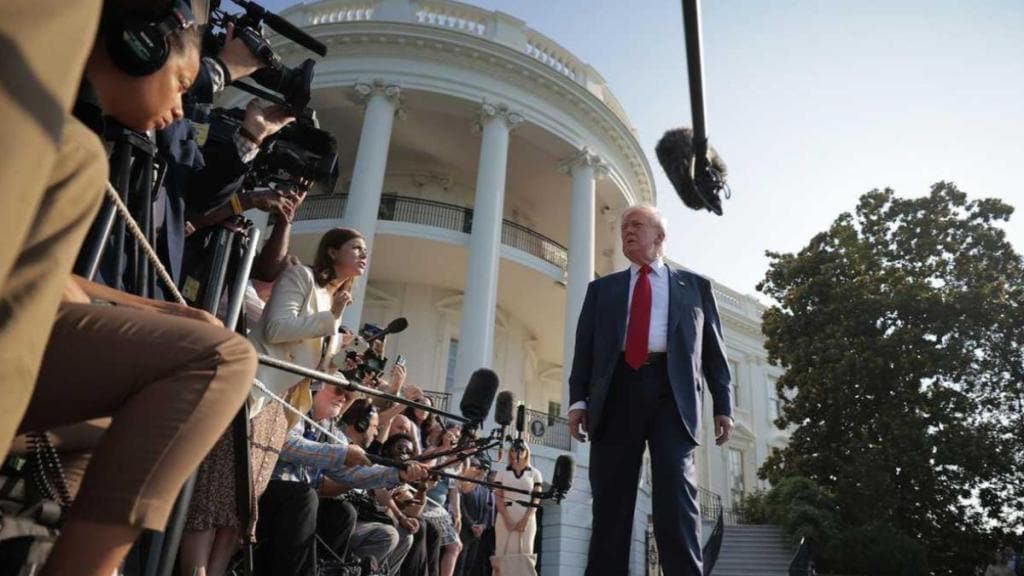A US government shutdown has begun after a last-ditch Senate vote failed to pass a stopgap measure to keep funding flowing. Anvitii Rai explains what will be the impact within and outside the US, and why a seemingly impossible bipartisan resolution is the unlikely but only way forward
l How did the US get here?
US FEDERAL SPENDING is governed by 12 Appropriation Bills, each covering a major area of government such as labour, defence, and agriculture (similar to India’s ministries). In both the House and Senate, these Bills are handled by sub-committees under the Appropriations Committees, composed of members from both parties. Each sub-committee must draft its Bill annually based on the President’s budget proposal and secure approval from the full committee, the House, and the Senate. All Bills must be passed before October 1, the start of the US fiscal year. If even some Bills fail to get the required votes, federal spending for those agencies can be halted. In such cases, a continuing resolution (CR)—similar to India’s Vote on Account—can temporarily fund government operations.
Currently, a last-minute attempt to pass a CR in the Senate has failed, after none of the 12 Bills were passed. Republicans want a “clean” extension with no policy changes, while Democrats are pressing for the continuation of health insurance subsidies and other programme funding, forcing the government to shut down most of its services.
l What is a shutdown, and why does it happen in the US?
A US GOVERNMENT shutdown occurs when Appropriation Bills are not passed before October 1, leaving the government without legal authority to spend. While programmes may be authorised, no appropriation means no funding. During a shutdown, essential services such as air traffic control, the military, and Social Security continue, but many others — including immigration, NASA, and national parks — are suspended. Shutdowns are more frequent in the US due to its divided power structure: Congress controls the Budget, but the President can veto Bills, creating negotiation points. Deadlocks, such as the current disagreement over the CR, can block funding.
By contrast, in parliamentary democracies like India, the executive and legislature are fused, and Union Budgets are usually passed smoothly, so shutdowns are extremely rare.
l What are the ramifications?
BEING THE WORLD’S largest economy, the impact of a US government shutdown is felt across the world. A prolonged shutdown can shake investor confidence, making important market indices volatile and affecting global liquidity and bond markets as the Treasury’s services are affected. For example, during a 2013 shutdown, global stock markets reacted nervously, and the Dow Jones fell over 1,000 points at one stage in its lead-up. Additionally, the delay in the release of economic data can affect global trade strategies. Other essential agencies such as the Centers for Disease Control and Prevention are unable to do their jobs. Moreover, as customs and licensing operations are slowed, international exporters and importers are impacted, and this time, it will be felt even more deeply owing to the already-ongoing tariff war with several countries. Additionally, immigration services will be affected and visa processing will also face a pause.
l Is there a way out?
UNLIKE MOST MOTIONS, which require a simple majority, Appropriation Bills require 60 votes in the Senate. This makes a bipartisan resolution the most viable path forward. The stakes are high—with most senators having left Washington, the shutdown is likely to persist till Friday, if not longer. The Senate’s next scheduled session is October 13, due to the State Work Period and the Columbus Day holiday.
Past shutdowns have been resolved when Congress passed CRs while debates on contentious topics continued. Similarly, the current stalemate could move toward resolution if sufficient votes are secured for a CR, buying time for lawmakers to negotiate healthcare and other programme funding. However, experts caution that the increasingly polarised political climate makes compromise difficult.
Reuters quoted University of Chicago political science professor Robert Pape noting, “The rules of politics are radically changing… Each side would have to backtrack against tens of millions of aggressive supporters, their own constituents, which is going to be really hard for them to do.”


